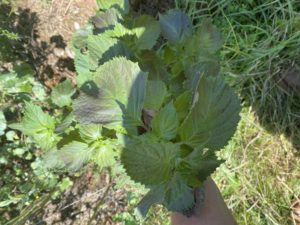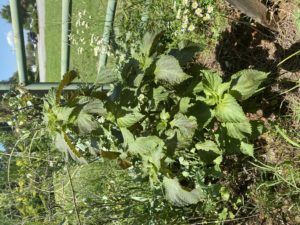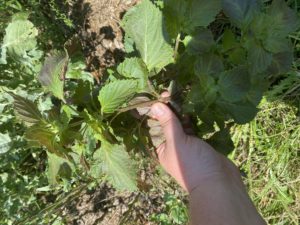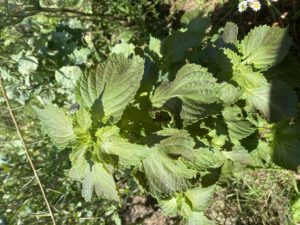Perilla Mint – Weed ID Wednesday
go.ncsu.edu/readext?723716
en Español / em Português
El inglés es el idioma de control de esta página. En la medida en que haya algún conflicto entre la traducción al inglés y la traducción, el inglés prevalece.
Al hacer clic en el enlace de traducción se activa un servicio de traducción gratuito para convertir la página al español. Al igual que con cualquier traducción por Internet, la conversión no es sensible al contexto y puede que no traduzca el texto en su significado original. NC State Extension no garantiza la exactitud del texto traducido. Por favor, tenga en cuenta que algunas aplicaciones y/o servicios pueden no funcionar como se espera cuando se traducen.
Português
Inglês é o idioma de controle desta página. Na medida que haja algum conflito entre o texto original em Inglês e a tradução, o Inglês prevalece.
Ao clicar no link de tradução, um serviço gratuito de tradução será ativado para converter a página para o Português. Como em qualquer tradução pela internet, a conversão não é sensivel ao contexto e pode não ocorrer a tradução para o significado orginal. O serviço de Extensão da Carolina do Norte (NC State Extension) não garante a exatidão do texto traduzido. Por favor, observe que algumas funções ou serviços podem não funcionar como esperado após a tradução.
English
English is the controlling language of this page. To the extent there is any conflict between the English text and the translation, English controls.
Clicking on the translation link activates a free translation service to convert the page to Spanish. As with any Internet translation, the conversion is not context-sensitive and may not translate the text to its original meaning. NC State Extension does not guarantee the accuracy of the translated text. Please note that some applications and/or services may not function as expected when translated.
Collapse ▲Perilla Mint, also known as beefsteak plant, Chinese basil or purple mint, might be useful for other things, but is of great concern if found in pastures or hayfields. If consumed, it is toxic to livestock and can cause respiratory issues that can lead to fatality. It can be easily identified by its ribbed, square stems and broad leaves, arranged oppositely with a toothed margin. The leaves vary in color from green to purple, especially when found growing in the shade. Perilla mint is an annual weed, meaning that it completes its lifecycle in one year or growing season.
Perilla Mint is usually of greater concern this time of year when it is blooming and pasture grasses may be less available. Livestock do not usually consume it, especially if plenty of other forages are available. However, if you have a cool-season, grass-based pasture (fescue, orchardgrass, etc), you may naturally see a decline in your forage availability right now, which may lead to an increased chance of your livestock consuming perilla mint.
It is important to scout your pastures to know what weeds and how many of them are present in order to accurately plant your control methods. If you find a heavy infestation of perilla mint, you have multiple control options but timing of each is important.
Mechanical Control-
-Perilla Mint typically has a shallow root system and is easy to pull up by hand, if you catch your infestation early on. This is typically only feasible if you find small amounts.
-If you find larger amounts of perilla mint, it can be mowed down to suppress top growth. Make sure that it is not already blooming or gone to seed, as mowing then will only spread those seed farther.
Chemical Control-
-Spraying is also effective, but would need to be done much earlier in the season to catch it as it is actively growing, smaller in size, and before bloom.
So when thinking through what to do about Perilla Mint-
- Scout your pastures / hay fields now.
- Pull up by hand or mow (if not blooming or gone to seed yet) to reduce the seed production of this growing season.
- If you find a heavy infestation, consider moving livestock to an alternate pasture and providing additional forages.
- Plan to use chemical control in early spring (if interested in using this method).
- Continue to re-scout pastures to determine future control methods and strategies.
As always, remember to take a soil sample so that you can properly lime and fertilize your pastures or hayfields!








